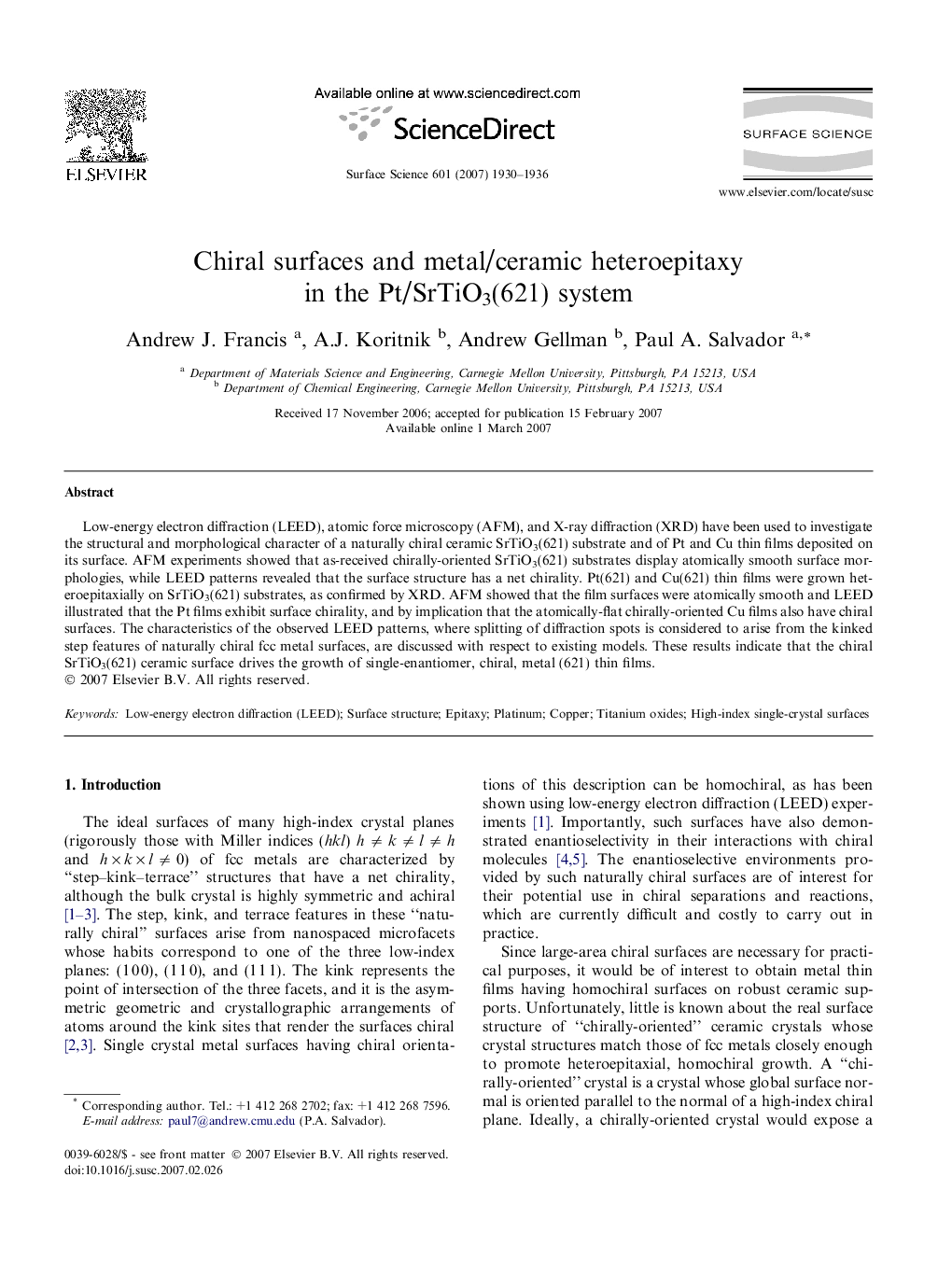| Article ID | Journal | Published Year | Pages | File Type |
|---|---|---|---|---|
| 5425933 | Surface Science | 2007 | 7 Pages |
Low-energy electron diffraction (LEED), atomic force microscopy (AFM), and X-ray diffraction (XRD) have been used to investigate the structural and morphological character of a naturally chiral ceramic SrTiO3(621) substrate and of Pt and Cu thin films deposited on its surface. AFM experiments showed that as-received chirally-oriented SrTiO3(621) substrates display atomically smooth surface morphologies, while LEED patterns revealed that the surface structure has a net chirality. Pt(621) and Cu(621) thin films were grown heteroepitaxially on SrTiO3(621) substrates, as confirmed by XRD. AFM showed that the film surfaces were atomically smooth and LEED illustrated that the Pt films exhibit surface chirality, and by implication that the atomically-flat chirally-oriented Cu films also have chiral surfaces. The characteristics of the observed LEED patterns, where splitting of diffraction spots is considered to arise from the kinked step features of naturally chiral fcc metal surfaces, are discussed with respect to existing models. These results indicate that the chiral SrTiO3(621) ceramic surface drives the growth of single-enantiomer, chiral, metal (621) thin films.
